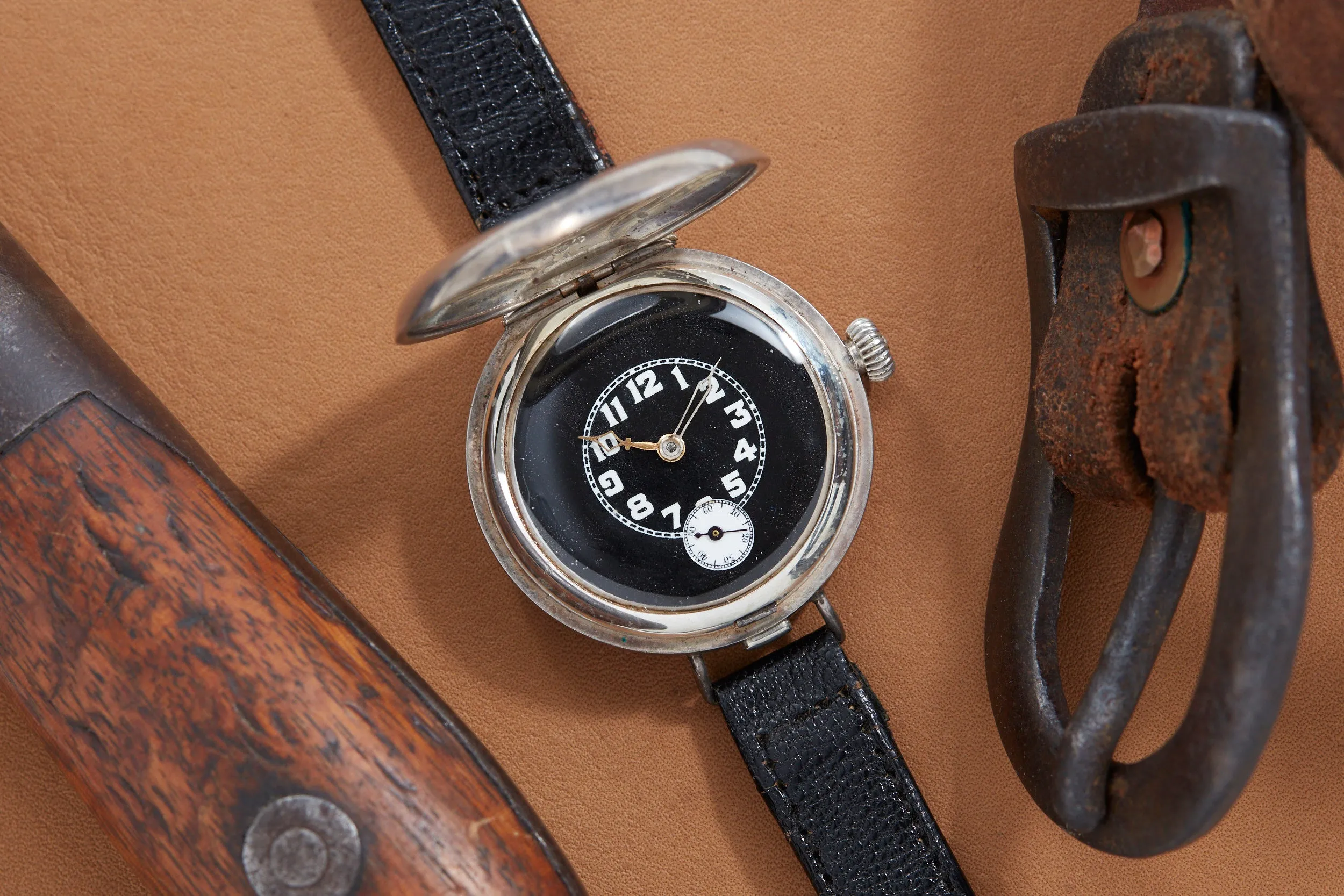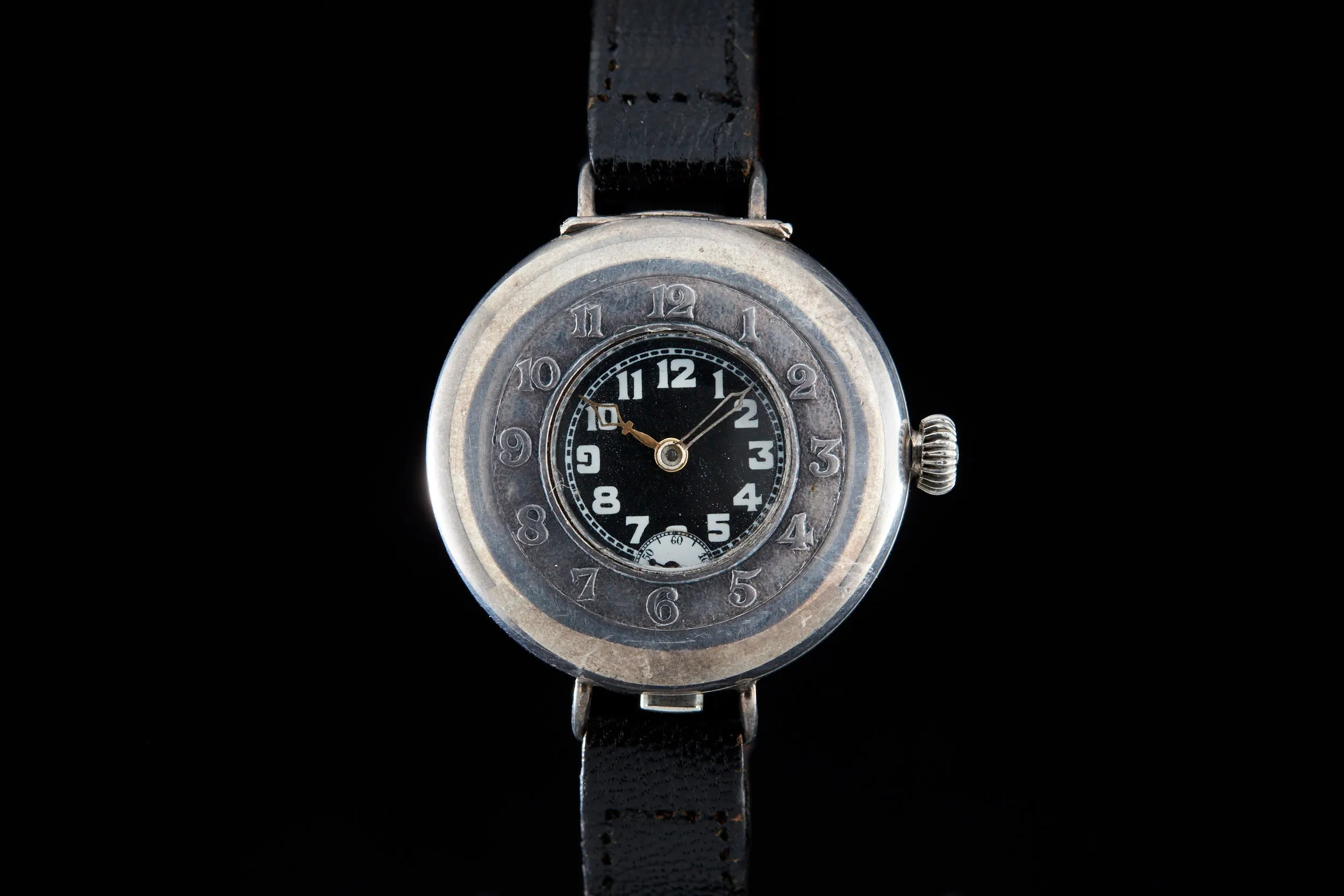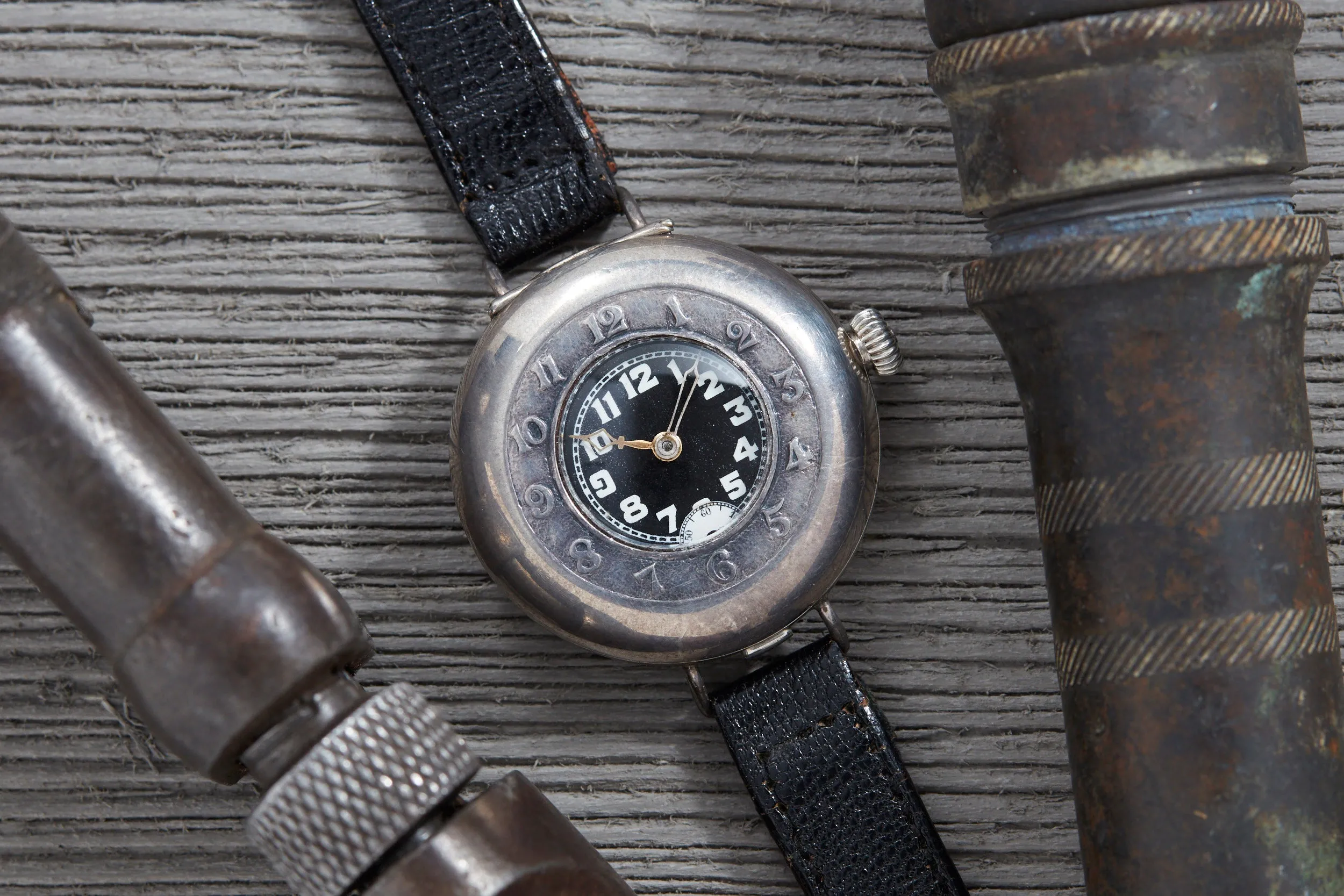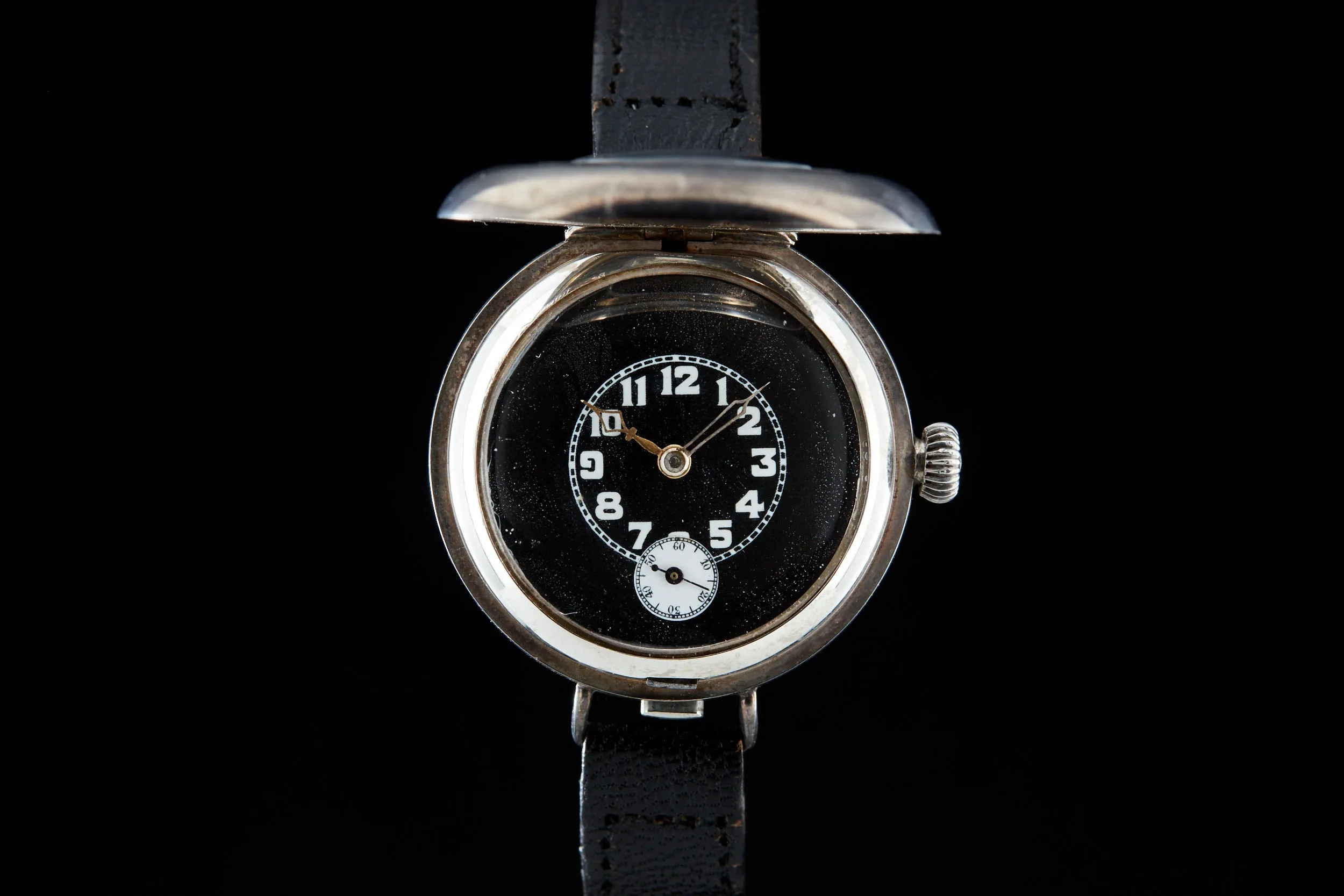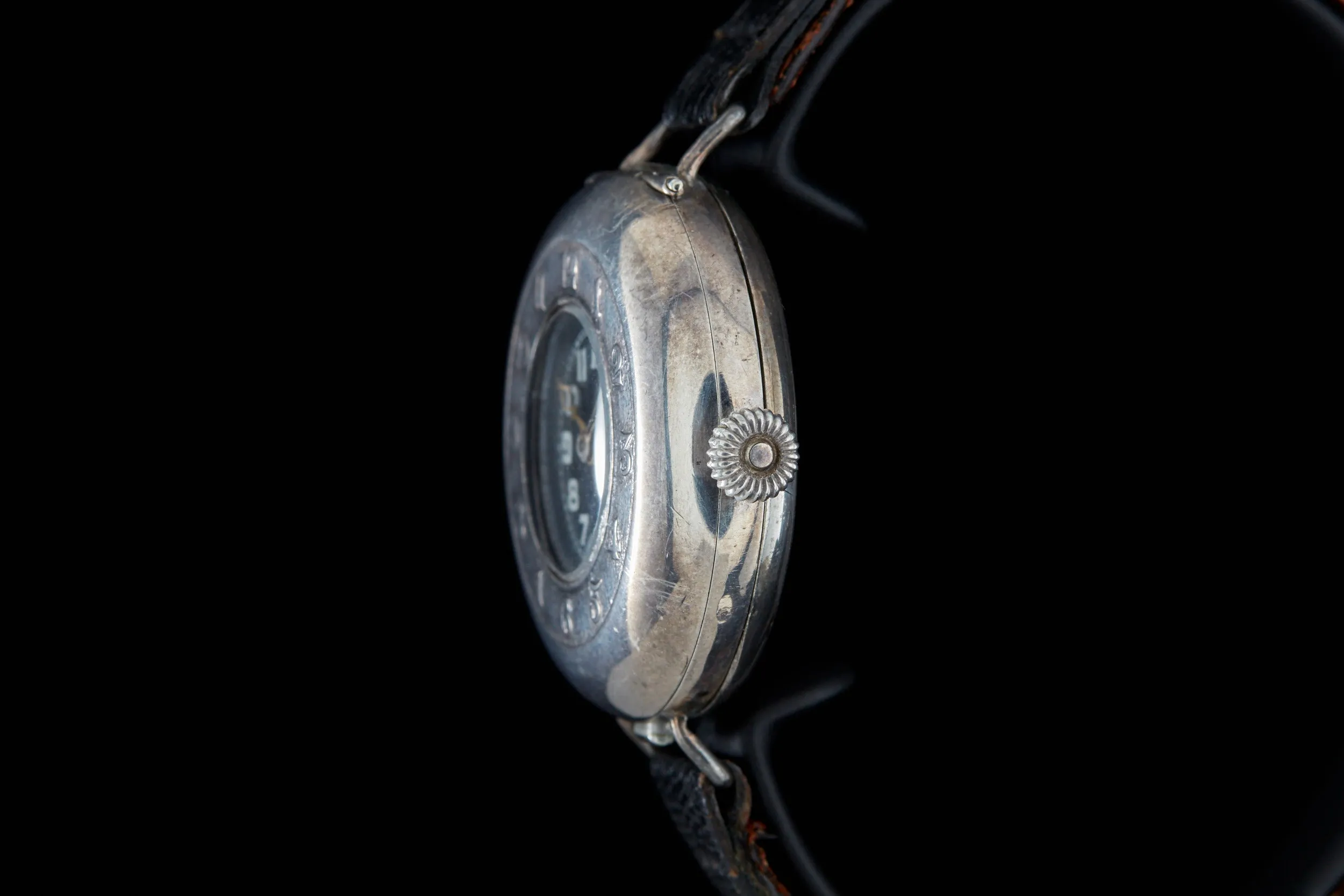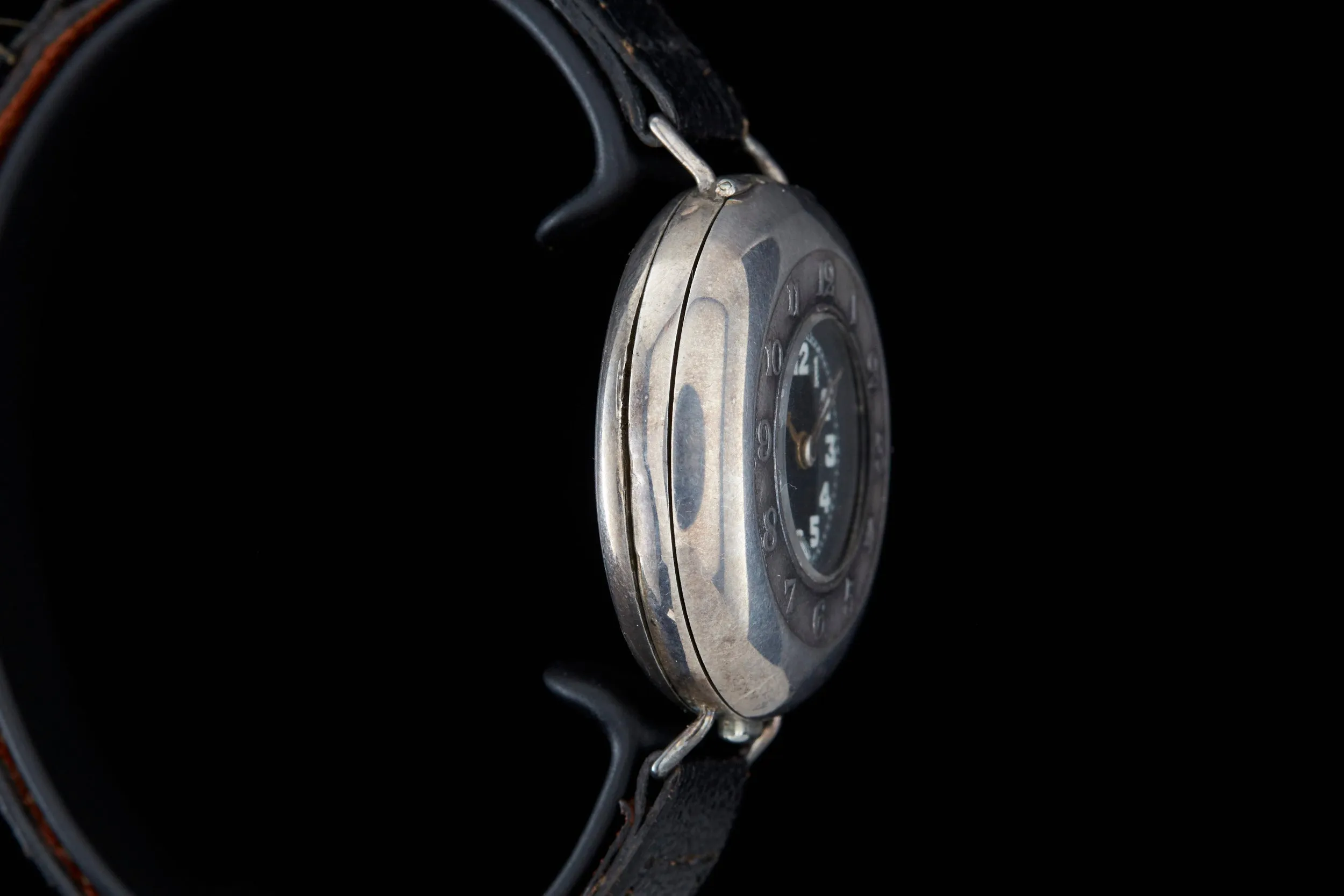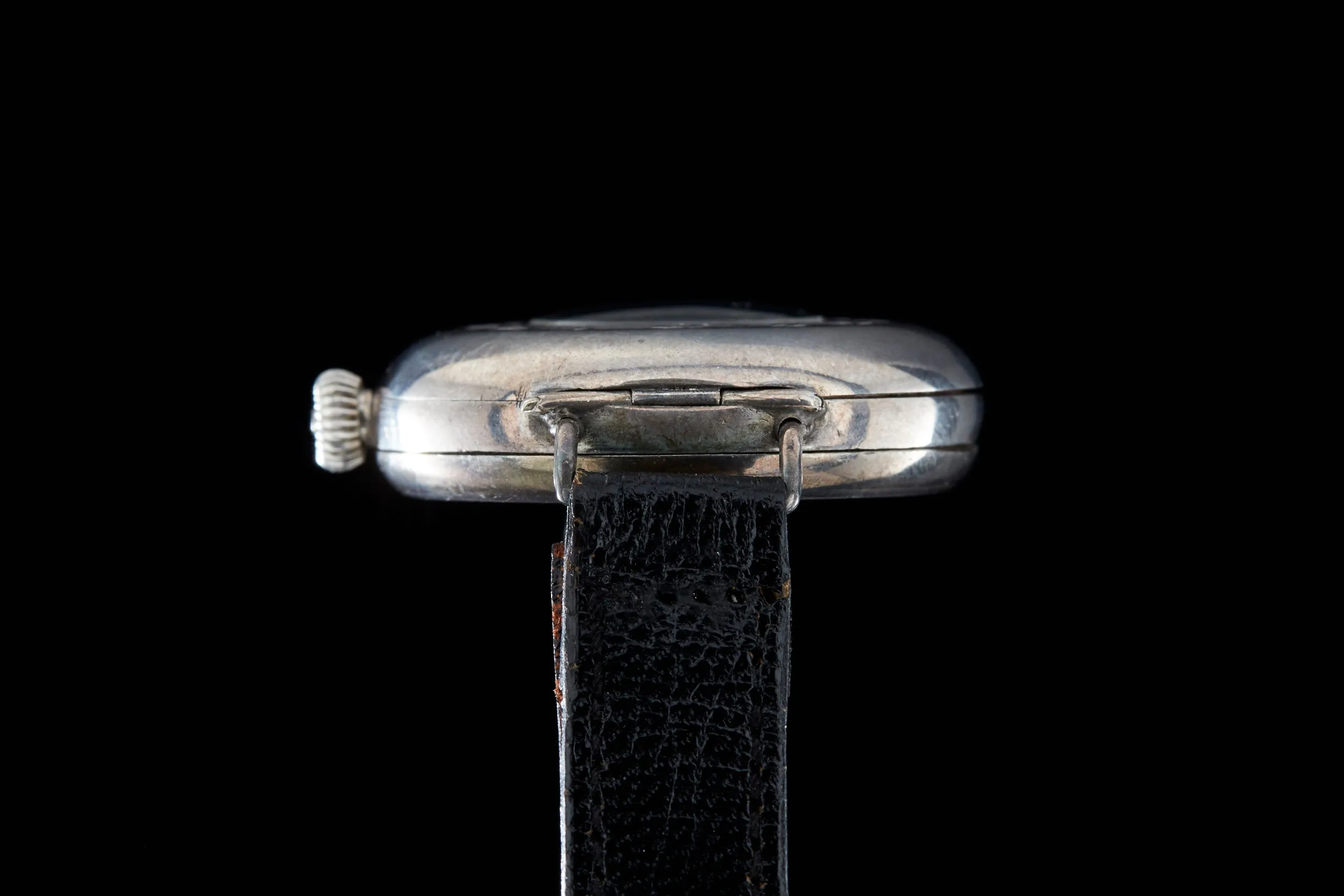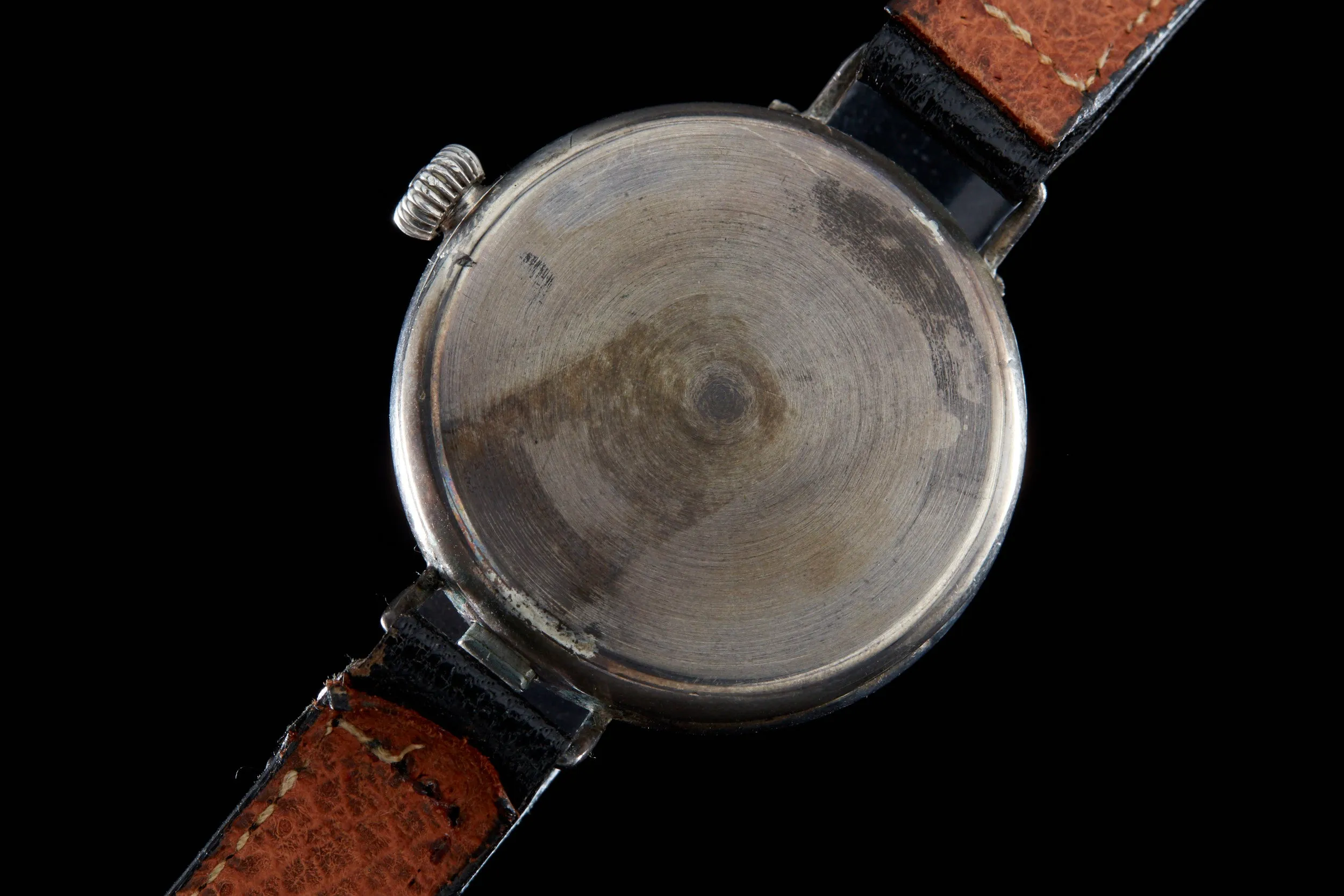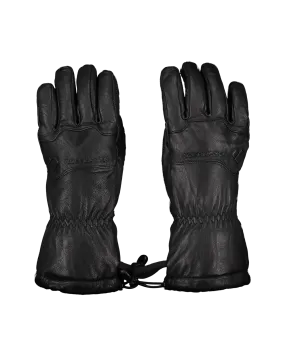An officer in a greatcoat stands knee-deep in mud. Around him, soldiers lean against the wall of the trench, their Lee-Enfield rifles clutched to their chests. The air crackles, not just with cold, but with anticipation—even terror.
To the officer, the man who in a few short minutes must lead them into battle, there is no time for fear. Though his heart may be pounding, and though sweat trickles down his forehead under the brim of his cap, his hands are steady. He pushes down the cuff of his coat and glances at the watch on his wrist—a new invention, from Wilsdorf & Davis back home in London—as it counts down the seconds until oblivion.
Three, two, one…
He raises a whistle to his mouth and blows, and is answered with the roar of his men as they swarm over the top of the trench and charge into the jaws of death.
Though the officer in our story is fictional, he might well have been one of the 28,060 British men who served as officers the British Army. More men had enlisted in the army than ever before, and with mechanized transport—trains, armored cars, and tanks—now moving them faster than ever, accurate timekeeping was more important than ever before. Convenience was key, and pocket watches weren’t.
Therefore, dozens of watch companies followed Cartier’s lead and started fitting their watches with straps—including Wilsdorf & Davis, now known as Rolex.
During the First World War in Britain, anti-German sentiment ran high. As a German by birth, Hans Wilsdorf suffered—and so did his company, which he founded with his brother-in-law, Alfred Davis. Even though Wilsdorf had married a British citizen and became a British citizen himself, the British public were still suspicious of anything Germanic.
Wilsdorf’s solution to this problem was simple: if the British objected to his company’s name, then he would change it—and so, on November 15, 1915, Wilsdorf had his lawyers register the name Rolex.
Though the decision had cost him $296 in 1915 (or the equivalent of $99,400 in today’s money), but a necessary one—and as the world knows now, a profitable one.
The watches that Wilsdorf’s company sent to serve overseas were like this one, with a “half-hunter” case commonly used in pocket watches. Unlike “hunter” cases, where the dials were completely covered by a hinged outer case, the covers of half-hunter cases had a hole—usually covered by the crystal—through with the time could be read.
This particular watch features a sterling silver case, since the material was regarded as steel is now—a robust, inexpensive material that could withstand the rigors and shocks of daily use. Touches like the Arabic numerals on the front of the case, as well as the knurling on the crown, reveal how thoughtfully it was designed. At 100 years old, it’s still every bit the utilitarian tool it was designed to be, and has taken on a patina that speaks of the years it’s seen.

